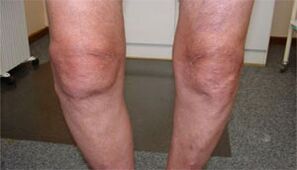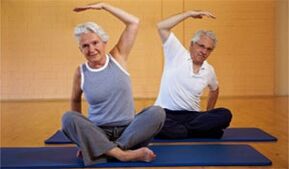Osteoarthritis is a pathological process in the joints that can have various causes.They all lead to functional and structural disorders of one or more joints.This disease is the most common cause of chronic joint pain.It affects millions of people.In any case, the symptoms and treatment of osteoarthritis are individual and require observation by a qualified orthopedist.
What is osteoarthritis?
The basis of the disease is the progressive loss of cartilage, which normally lines the adjacent bone sections and ensures that they slide together.Under the influence of various causes, the cartilage tissue begins to collapse, immature stem cells are activated in the underlying bone, it becomes denser and cavities (cysts) and outgrowths (osteophytes) form in it.
The gap between the articular surfaces gradually narrows and then disappears completely, and the limb stops moving.When osteoarthritis occurs, all joint tissues are affected, including the surrounding muscles, ligaments, and joint capsule.Therefore, treating joint arthrosis is a difficult task and in later stages only surgery can help the patient.
The most common form of pathology is deforming arthrosis, which affects large joints of the lower extremities, as well as hands.
Causes of osteoarthritis
Possible reasons for the development of osteoarthritis:
- endocrine diseases – diabetes, hypothyroidism, hyperparathyroidism, acromegaly, obesity;
- Injuries, both large (fractures of bones, as a result of which their articular surfaces are displaced from the normal axis) and microscopic, but permanent (during hard work, constant occupational or sports stress);
- inflammatory processes: infectious arthritis, gout, rheumatoid diseases;
- Metabolic disorders in the body: Paget's disease and Wilson-Konovalov's disease;
- congenital developmental anomalies, for example, different limb lengths;
- genetic defects in collagen structure, for example Ehlers-Danlos syndrome;
- Neuropathies of different origins: diabetics, alcoholics;
- Hemophilia with frequent bleeding into the joint cavity.
In order to successfully treat arthrosis of the joints, it is necessary to eliminate the cause that caused it.
Symptoms and stages of osteoarthritis

The disease is accompanied by the following complaints and external signs:
- aching pain and limited mobility in one or more joints;
- Pain sensations increase after exercise, often at night, and become permanent in severe stages of arthrosis;
- A dangerous complication is immobility of the joints, the inability to move and care for oneself.
Common forms of the disease:
- Damage to the interphalangeal joints of the fingers and the base of the thumb, they can enlarge, swell, sometimes become painful and inflammation develops;
- Osteoarthritis of the hip joint: more common in men, associated with heavy physical work;the main cause of this disease in women is obesity;
- Osteoarthritis of the knee joint: more often associated with professional activities in a kneeling and squatting position;
- Osteoarthritis of the spine: accompanied by the formation of bone spurs that pinch the nerve roots, causing pain, weakness, loss of sensitivity in the limbs and constant pain in the lower back.
There are such degrees of arthrosis:
- 1st degree: slight limitation of mobility.
- 2nd degree: significant limitation of mobility, grinding during movements, moderate atrophy of the surrounding muscles.
- 3rd degree: deformation of the joint with almost complete freedom of movement.
Depending on the degree of dysfunction and the stage of pathology, doctors of various specialties - therapists, physiotherapists, rheumatologists, neurologists and orthopedists - are involved in the treatment of the disease.
Treatment of osteoarthritis
The aim of treatment is to eliminate risk factors and pain and to restore joint function.Various influence methods are used for this:
- non-pharmacological: informing the patient about his disease and preventing complications, physiotherapy, weight loss, physical therapy, use of assistive devices (orthoses, canes, crutches);
- Drugs for osteoarthritis: non-steroidal anti-inflammatory drugs, especially their new generation – selective COX-2 inhibitors;To relieve chronic pain, taking atypical antidepressants is indicated;symptomatic, slow-acting medications have only auxiliary value because their effectiveness in slowing cartilage destruction has not been demonstrated;
- with simultaneous inflammation and severe pain, traumatologists carry out intra-articular injections of glucocorticoid hormones;
- The most effective method is surgery, which allows to eliminate pain and restore mobility.
Different types of operations can be performed:
- Arthroscopy – examination of the inner surface of the joint with a small video camera (endoscope), removal of cartilage fragments blocking the joint;
- Arthroplasty – replacement of the cartilage surface with artificial material;
- Osteotomy – cutting or removing part of the bone to restore the normal axis of the joint;
- arthroscopic surgery – surgical restoration of cartilage integrity;
- Arthrodesis – artificially creating immobility in a joint (most often the ankle) to relieve the patient of constant pain;
- Endoprosthetics – removal of damaged joint ends from bone and replacement with an artificial joint.
prevention

There is no guaranteed way to prevent the disease.Prevention of arthrosis involves eliminating excessive stress on the joints and timely treatment of diseases that contribute to the destruction of cartilage.Treating arthrosis with folk remedies does not slow the progression of the disease, but helps to temporarily relieve joint pain.It can only be considered as an adjunct to traditional drug therapy or surgery.
Time is a negative factor for a patient with osteoarthritis.The earlier therapy is started or surgery is performed, the better the results will be.It is therefore advisable to consult a doctor immediately if symptoms of osteoarthritis occur.





















